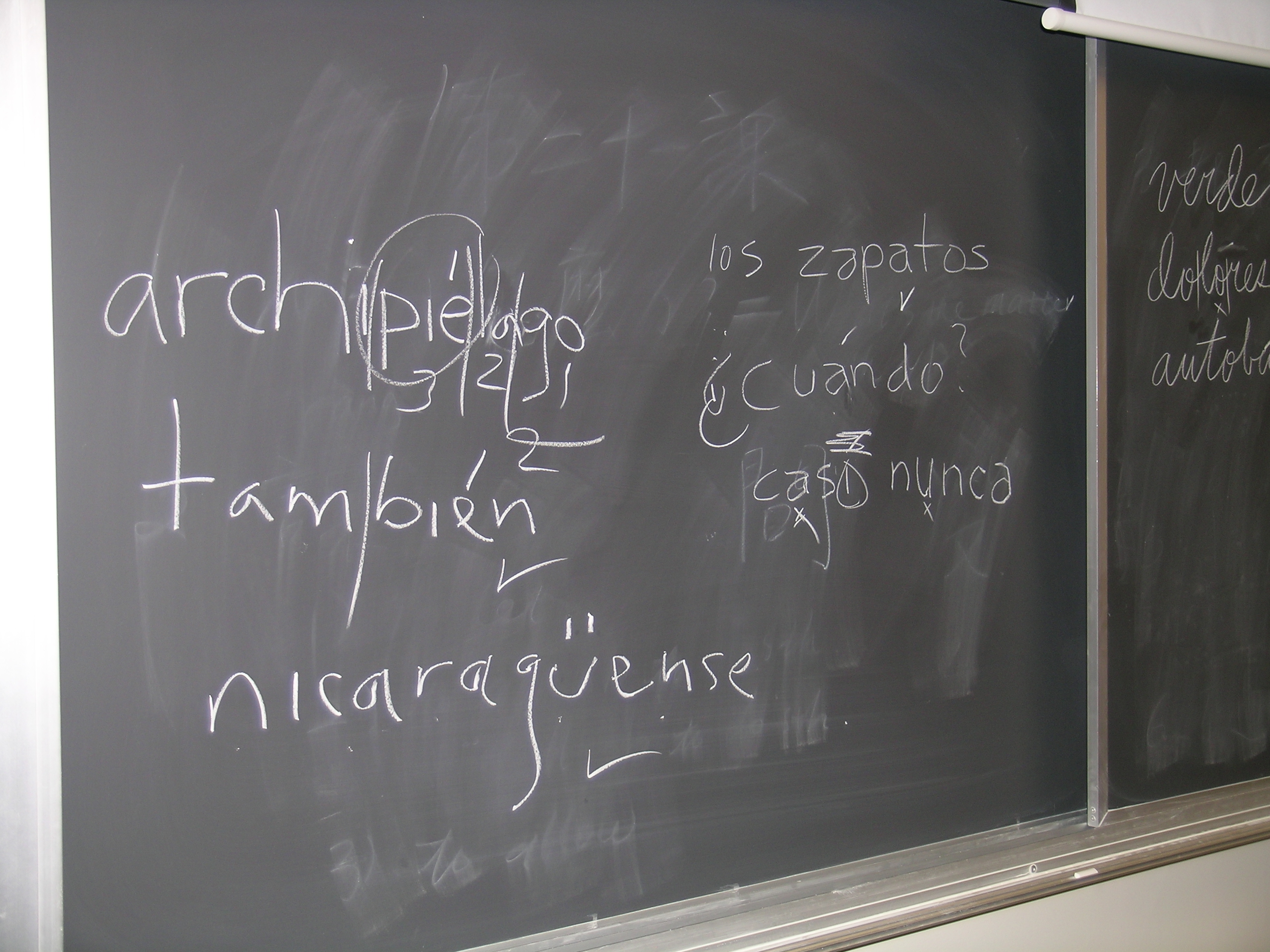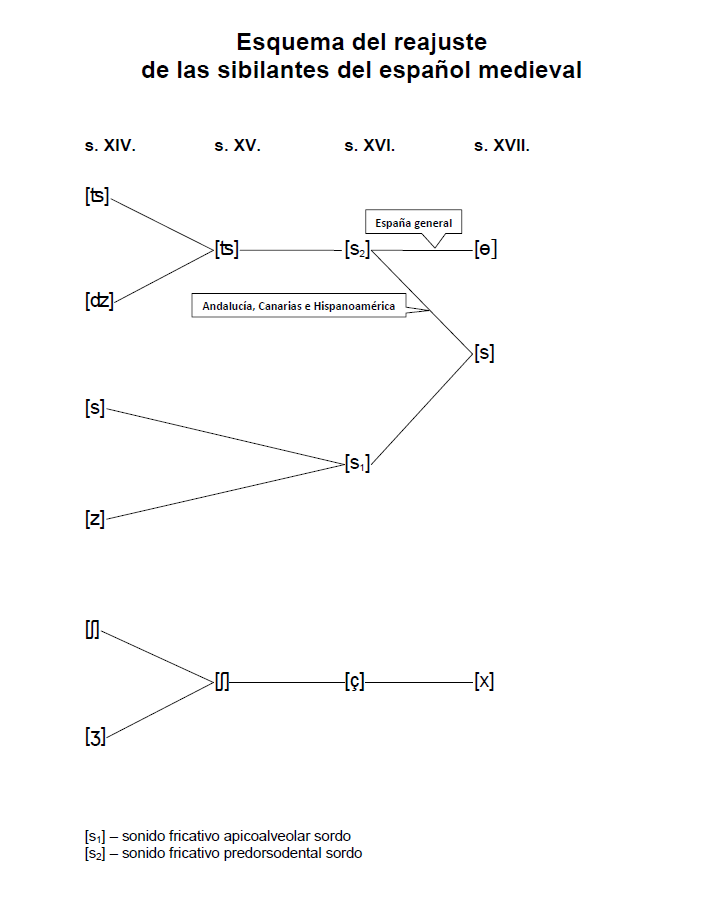|
Abecedario
Spanish orthography is the orthography used in the Spanish language. The alphabet uses the Latin script. The spelling is fairly phonemic, especially in comparison to more opaque orthographies like English, having a relatively consistent mapping of graphemes to phonemes; in other words, the pronunciation of a given Spanish-language word can largely be predicted from its spelling and to a slightly lesser extent vice versa. Spanish punctuation uniquely includes the use of inverted question and exclamation marks: . Spanish uses capital letters much less often than English; they are not used on adjectives derived from proper nouns (e.g. ''francés'', ''español'', ''portugués'' from ''Francia'', ''España'', and ''Portugal'', respectively) and book titles capitalize only the first word (e.g. '' La rebelión de las masas''). Spanish uses only the acute accent over any vowel: . This accent is used to mark the tonic ( stressed) syllable, though it may also be used occasionally to di ... [...More Info...] [...Related Items...] OR: [Wikipedia] [Google] [Baidu] |
Spanish Language
Spanish () or Castilian () is a Romance languages, Romance language of the Indo-European languages, Indo-European language family that evolved from the Vulgar Latin spoken on the Iberian Peninsula of Europe. Today, it is a world language, global language with 483 million native speakers, mainly in the Americas and Spain, and about 558 million speakers total, including second-language speakers. Spanish is the official language of List of countries where Spanish is an official language, 20 countries, as well as one of the Official languages of the United Nations, six official languages of the United Nations. Spanish is the world's list of languages by number of native speakers, second-most spoken native language after Mandarin Chinese; the world's list of languages by total number of speakers, fourth-most spoken language overall after English language, English, Mandarin Chinese, and Hindustani language, Hindustani (Hindi-Urdu); and the world's most widely spoken Romance language ... [...More Info...] [...Related Items...] OR: [Wikipedia] [Google] [Baidu] |
Alphabet
An alphabet is a standard set of letter (alphabet), letters written to represent particular sounds in a spoken language. Specifically, letters largely correspond to phonemes as the smallest sound segments that can distinguish one word from another in a given language. Not all writing systems represent language in this way: a syllabary assigns symbols to spoken syllables, while logographies assign symbols to words, morphemes, or other semantic units. The first letters were invented in Ancient Egypt to serve as an aid in writing Egyptian hieroglyphs; these are referred to as Egyptian uniliteral signs by lexicographers. This system was used until the 5th century AD, and fundamentally differed by adding pronunciation hints to existing hieroglyphs that had previously carried no pronunciation information. Later on, these phonemic symbols also became used to transcribe foreign words. The first fully phonemic script was the Proto-Sinaitic script, also descending from Egyptian hi ... [...More Info...] [...Related Items...] OR: [Wikipedia] [Google] [Baidu] |
Loanwords
A loanword (also a loan word, loan-word) is a word at least partly assimilated from one language (the donor language) into another language (the recipient or target language), through the process of borrowing. Borrowing is a metaphorical term that is well established in the linguistic field despite its acknowledged descriptive flaws: nothing is taken away from the donor language and there is no expectation of returning anything (i.e., the loanword). Loanwords may be contrasted with calques, in which a word is borrowed into the recipient language by being directly translated from the donor language rather than being adopted in (an approximation of) its original form. They must also be distinguished from cognates, which are words in two or more related languages that are similar because they share an etymological origin in the ancestral language, rather than because one borrowed the word from the other. Examples and related terms A loanword is distinguished from a calque (or ... [...More Info...] [...Related Items...] OR: [Wikipedia] [Google] [Baidu] |
Acute Accent
The acute accent (), , is a diacritic used in many modern written languages with alphabets based on the Latin alphabet, Latin, Cyrillic script, Cyrillic, and Greek alphabet, Greek scripts. For the most commonly encountered uses of the accent in the Latin and Greek alphabets, precomposed characters are available. Uses History An early precursor of the acute accent was the Apex (diacritic), apex, used in Latin language, Latin inscriptions to mark vowel length, long vowels. The acute accent was first used in French in 1530 by Geoffroy Tory, the royal printer. Pitch Ancient Greek The acute accent was first used in the Greek diacritics, polytonic orthography of Ancient Greek, where it indicated a syllable with a high pitch accent, pitch. In Modern Greek, a stress (linguistics), stress accent has replaced the pitch accent, and the acute marks the stressed syllable of a word. The Greek name of the accented syllable was and is (''oxeîa'', Modern Greek ''oxía'') "sharp" or "h ... [...More Info...] [...Related Items...] OR: [Wikipedia] [Google] [Baidu] |
Spanish Phonology
This article is about the phonology and phonetics of the Spanish language. Unless otherwise noted, statements refer to Castilian Spanish, the standard dialect used in Spain on radio and television. For historical development of the sound system, see History of Spanish. For details of geographical variation, see Spanish dialects and varieties. Phonemic representations are written inside slashes (), while phonetic representations are written in brackets (). Consonants The phonemes , , and are pronounced as voiced stops only after a pause, after a nasal consonant, or—in the case of —after a lateral consonant; in all other contexts, they are realized as approximants (namely , hereafter represented without the downtacks) or fricatives. The phoneme is distinguished from only in some areas of Spain (mostly northern and rural) and South America (mostly highland). Other accents of Spanish, comprising the majority of speakers, have lost the palatal lateral as a distinct ph ... [...More Info...] [...Related Items...] OR: [Wikipedia] [Google] [Baidu] |
Yeísmo
(; literally "Y-ism") is a distinctive feature of many dialects of the Spanish language, characterized by the loss of the traditional palatal lateral approximant phoneme (written ) and its merger into the phoneme (written ). It is an example of delateralization. In other words, and represent the same sound when is present. The term comes from one of the Spanish names for the letter (). Over 90% of Spanish speakers exhibit this phonemic merger. Similar mergers exist in other languages, such as French, Italian, Hungarian, Catalan, Basque, Portuguese or Galician, with different social considerations. Occasionally, the term () has been used to refer to the maintenance of the phonemic distinction between and . Pronunciation Most dialects that merge the two sounds represented by and realize the remaining sound as a voiced palatal fricative , which is much like in English ''your''. However, it sometimes becomes a voiced palatal affricate , sounding somewhat li ... [...More Info...] [...Related Items...] OR: [Wikipedia] [Google] [Baidu] |
Palatal Lateral Approximant
The voiced palatal lateral approximant is a type of consonantal sound used in some spoken languages. The symbol in the International Phonetic Alphabet that represents this sound is , a rotated lowercase letter , and the equivalent X-SAMPA symbol is L. Many languages that were previously thought to have a palatal lateral approximant actually have a lateral approximant that is, broadly, alveolo-palatal; that is to say, it is articulated at a place in-between the alveolar ridge and the hard palate (excluded), and it may be variously described as alveolo-palatal, lamino-postalveolar,, citing or postalveolo-prepalatal. None of the 13 languages investigated by , many of them Romance, has a 'true' palatal. That is likely the case for several other languages listed here. Some languages, like Portuguese and Catalan, have a lateral approximant that varies between alveolar and alveolo-palatal. There is no dedicated symbol in the International Phonetic Alphabet that represents the alveol ... [...More Info...] [...Related Items...] OR: [Wikipedia] [Google] [Baidu] |
Seseo
In Spanish dialectology, the realization of coronal fricatives is one of the most prominent features distinguishing various dialect regions. The main three realizations are the phonemic distinction between and ('), the presence of only alveolar ('), or, less commonly, the presence of only a denti-alveolar that is similar to ('). While an urban legend attributes the presence of the dental fricative to a Spanish king with a lisp, the various realizations of these coronal fricatives are actually a result of historical processes that date to the 15th century. Origins Castilian 'lisp' A persistent urban legend claims that the prevalence of the sound in Spanish can be traced to a Spanish king who spoke with a lisp, whose pronunciation spread via prestige borrowing to the rest of the population. This myth has been discredited by scholars. traces the origins of the legend to a chronicle of Pero López de Ayala which says that Peter of Castile "lisped a little" (). However, ... [...More Info...] [...Related Items...] OR: [Wikipedia] [Google] [Baidu] |
Phoneme
A phoneme () is any set of similar Phone (phonetics), speech sounds that are perceptually regarded by the speakers of a language as a single basic sound—a smallest possible Phonetics, phonetic unit—that helps distinguish one word from another. All languages contain phonemes (or the spatial-gestural equivalent in sign languages), and all spoken languages include both consonant and vowel phonemes; phonemes are primarily studied under the branch of linguistics known as phonology. Examples and notation The English words ''cell'' and ''set'' have the exact same sequence of sounds, except for being different in their final consonant sounds: thus, versus in the International Phonetic Alphabet (IPA), a writing system that can be used to represent phonemes. Since and alone distinguish certain words from others, they are each examples of phonemes of the English language. Specifically they are consonant phonemes, along with , while is a vowel phoneme. The spelling of Engli ... [...More Info...] [...Related Items...] OR: [Wikipedia] [Google] [Baidu] |
Lower Case
Letter case is the distinction between the letters that are in larger uppercase or capitals (more formally ''majuscule'') and smaller lowercase (more formally '' minuscule'') in the written representation of certain languages. The writing systems that distinguish between the upper- and lowercase have two parallel sets of letters: each in the majuscule set has a counterpart in the minuscule set. Some counterpart letters have the same shape, and differ only in size (e.g. ), but for others the shapes are different (e.g., ). The two case variants are alternative representations of the same letter: they have the same name and pronunciation and are typically treated identically when sorting in alphabetical order. Letter case is generally applied in a mixed-case fashion, with both upper and lowercase letters appearing in a given piece of text for legibility. The choice of case is often denoted by the grammar of a language or by the conventions of a particular discipline. In ortho ... [...More Info...] [...Related Items...] OR: [Wikipedia] [Google] [Baidu] |



